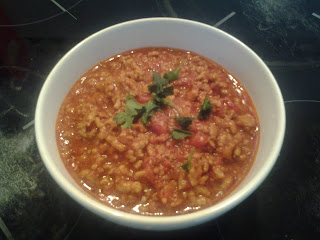"Oats: - a grain, which in England is generally given to horses, but in Scotland supports the people." Samuel Johnson, author of the first English dictionary, 1755
"Yes, and where else will you see such horses and such men?" - reply from Lord Elibank, Scottish soldier and author.
Oats have been a staple grain of Scotland for centuries. It is said that they are one of the few grains that can withstand the harsh Scottish climate. These delicious oatcakes are simple to make and can be eaten sweet or savoury.
I remember reading a story years ago about Sir James Douglas, "the Black Douglas", or "Good Sir James" (depending on your point of view), the friend and trusted captain of Robert the Bruce, during the Scottish Wars of Independence. The Bruce gave Douglas the task of leading raiding parties into English territory, causing as much disruption as possible, and then returning under cover of darkness. The Scots had to travel light if they were to be effective, and so carried with them a bag of oats under their saddles, which they would mix with water and bake on their shields into a flat cake. These cakes were quick and easy to cook and could be eaten as they rode. The nutritious oats would sustain them on their journey. The Scots' success in raiding parties and ease in avoiding capture made Douglas the scourge of England. The English tried to copy the Scots' tactics, with their soldiers placing loaves of bread under their saddles as they rode. When they came to eat, however, the bread was soaked through with horse sweat and inedible!
We live in more civilised times now, although it appears the Scottish dream of independence has not diminished!
Ingredients
300g rough oats
50g plain flour
50g melted butter
a pinch of salt
1/2 tsp bicarbonate of soda/baking powder
hot water to mix (250-300ml)
Method
Pre-heat the oven to 180 C.
Mix the oats with the flour and baking powder. Add the melted butter and salt and form into a ball of dough. Roll out onto an oats covered work surface to a thickness of about 3mm. Using a pastry cutter or the edge of a glass cut into rounds of about 8cm in diameter.
Place the oatcakes on a lightly greased baking tray in the middle of the oven and bake until golden brown and hard, about 15-20 minutes. Remove from the oven and leave to cool completely.
Oatcakes are delicious with a range of accompaniments, such as cheese, jam, butter or my personal favourite, cheese spread! These oatcakes will keep in an airtight container for several weeks.
Enjoy!
DID YOU KNOW?
Oatcakes are reported to be the favourite breakfast of the Queen of England, and the favourite cake of David Cameron.
DID YOU KNOW?
Oats are one of the most nutritious and unrefined grains available. They are high in fibre and are thought to help in lowering cholesterol. They are often named in a group of so-called "superfoods".






































